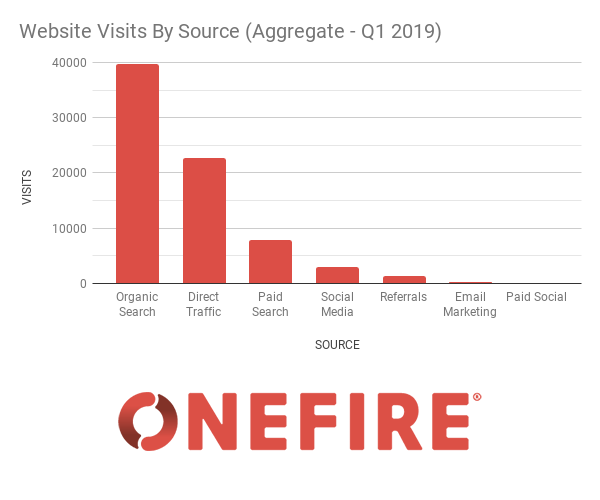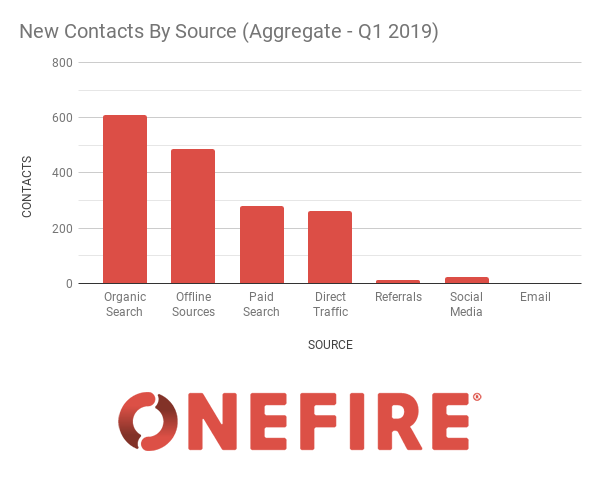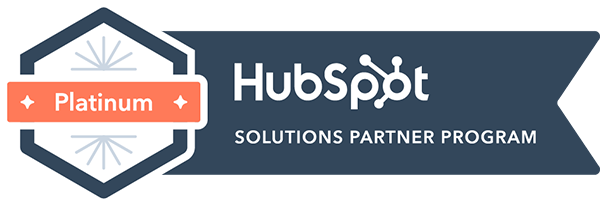
As a digital marketing agency, we’re asked about social media production quite a bit.
We’re often asked to amp up a company’s organic social media presence by posting more—”more” meaning both a higher quantity of posts and better quality posts, such as original graphics and video—with the expectation that doing so will increase visitors to their website and then convert those visitors into leads.
These types of requests present challenges to us in terms of resourcing and production, so we took a step back to ask ourselves two questions…
- Does posting more content to social media increase visitors to a company’s website?
- Does posting more content to social media increase conversions of those visitors into new leads for the company?
Based on the available data, the answer to both those questions appears to be 'no.'
That’s why we’ve developed this series.
In part one, we’ll take a look at why the numbers don’t support increasing the production of only branded content to a company’s social media page.
In future parts, we’ll take a look at how your brand can effectively use social media to engage with your target audience, as well as what channels we believe are more valuable than organic (unpaid) social media in delivering visitors to your website and converting them into viable leads.
Let’s dig in.
Social Media Engagement Is Waning Industry-Wide
The latest industry research suggests that engagement across social media is declining.
The folks behind social media analytics software maker RivalIQ uncovered some powerful information about how people are engaging with social media in the 2019 Social Media Industry Benchmark Report.
This study looks at social media engagement metrics from more than 2,000 companies across 12 industries.
Each company had an active presence on Facebook, with a following between 25,000 and 1 million, as well as Instagram and Twitter,.
RivalIQ defined engagement as “measurable interaction on social media posts, including likes, comments, favorites, retweets, shares, and reactions.” Further, “engagement rate is calculated based on all these interactions divided by total follower count.”
What did they find across all industries?
- Facebook: The median engagement rate fell from 2018 by roughly half from 0.16 percent to 0.09%. “Every industry saw a dramatic decline in Facebook engagement rate this year,” they found, “and for many, that meant less than half than last year’s engagement.” In fact, every industry median engagement rate this year fell below last year’s.
- Twitter: Engagement remained consistent between this year and last year at 0.048%.
- Instagram: This channel had the highest engagement rate of the three, even with the reduction from 1.73% to 1.6%.
At a 0.09% engagement rate, a Facebook page with a minimum of 25,000 likes should expect to get 22-23 engagements per post on average (25,000 multiplied by 0.0009).
For some businesses, that may be great.
However, we primarily work with smaller businesses, most of which have considerably less than 25,000 page likes.
Let’s assume our average client has 1,000 page likes. At 0.09% engagement, less than one person is engaging with each post (1,000 multiplied by 0.0009).
In other words, one person may like each piece of your SMB’s social media content.
Your business will have to decide whether its investment in social media is worth that potential.
Organic Social Media Doesn’t Drive Website Visits Or New Contacts, Either
As mentioned earlier in this post, we’ve been challenged by the idea of publishing so much social content when our hunch was it wasn’t driving results.
Let’s take a look at what we mean by that.
ONEFIRE is a HubSpot Gold partner agency. HubSpot’s powerful inbound marketing software allows us to perform many marketing actions related to email, blogging, and of course, social media. Its robust reporting system helps us understand which sources are most effective in driving traffic, generating leads, and closing deals.
It turns out that our hunch is right.
What we’ve found using HubSpot’s reporting tools is that posting regular social media updates to both B2B and B2C company accounts yields relatively little in terms of website visits and lead generation.
We used HubSpot reporting and looked at three clients—one B2B company in the IT space and two B2C companies in healthcare and real estate.
Does Social Media Drive Website Visitors?
First, we wanted to see whether social media drove people to our clients’ websites.
After all, since we post social media updates most days of the week among all these clients—and sometimes multiple times per day—surely some people would click through to their websites, right?
Indeed, some people are, but it’s sparse.

This chart shows an aggregate of all three companies’ website visits by source in Q1 2019.
We have aggregated these clients’ information together so as not to reveal their actual data. Before you think that one client is killing it in organic and swaying the influence of social media on website visits, please take us for our word when we say that each client’s chart looks similar to this one.
Across all three companies, social media sent only a handful of visits compared to the firehoses that are organic search and direct traffic.
Direct traffic is a curious source because our guess is that many people aren’t necessarily typing the company’s name into the browser.
Instead, HubSpot has done a great job of explaining how direct traffic can, in fact, include “dark social,” which is when people share links with each other via text message or another form of private messaging (such as, oddly enough, through social media).
Whatever the case may be, it’s clear to us after looking at these clients that organic search traffic is a significant driver of website visits and the primary one that we’ll continue to recommend to clients when developing a content strategy for them.
Does Social Media Generate New Contacts?
If social isn’t driving website visits, maybe it’s driving the few people who visit to convert.
Nope.

Over the past 90 days, the aggregate amount of contacts generated by social media is dwarfed by the contacts generated by organic search, direct traffic, and paid search. Contacts that originated from social media once again pale in comparison to these three channels.
One other source that appears here is Offline Sources. This means that a contact originated outside of the website and was manually imported to a HubSpot portal. An example of a contact created by offline sources is a person you met at a trade show whose contact information you put in after meeting him or her at that event.
If You Still Want To Post On Social Media, You Can. Just Don’t Justify It By Saying These Things
By now, it’s clear to us that we will recommend a minimal social media posting schedule for our clients from now on.
However, we expect to hear objections to this recommendation. These include…
“... But it’s good for brand awareness!”
A company may argue that they may have to produce even more compelling social media content to be noticed.
This strategy has worked for some companies.
A 2018 Databox survey found that marketers are finding creative ways to increase their organic reach on Facebook—that is, ways to reach their Facebook audience without paying.
This group, and a number of other sources, overwhelmingly believes Facebook has become “pay to play” and that growing organic reach has gotten harder. (We’ll have more to say about this in a future post.)
We don’t deny the effectiveness of some of these strategies, and we congratulate those who have found success with increasing their organic Facebook reach.
However, we suggest putting muscle behind other channels, because it’s hard to make recommendations that are geared toward only brand awareness.
As Bernadette Jiwa warns:
“We don’t need to find more ways to make everyone see us. We need to find more ways to make the right people sure of us.”
“... What’s the downside of social?”
Even if you’re able to increase your organic social reach, why would you want to?
You don’t own these channels.
Author Paul Jarvis explains why you should invest in other channels much better than me:
“Try exporting your ‘page likers’ from Facebook or even your followers on Twitter… oh wait, you can’t do that?! That’s because those platforms own your data and own your social connections, not you. They own the connection you have with the people who connect with you there. There’s no portability and they can absolutely take and use those connections to further their own bottom line. They can also change the way you use their platforms, based on their whims. You want to reach your likers? It’s now $5 or more.”
“... Our competitors do it, so we should, too.”
Don’t be duped by what your competitors are doing.
Your competitor may not have a clue where they’re going, but if you’re using a tool like HubSpot, you most certainly do.
It’s time to focus on your business and quit worrying about everyone else is doing.
Final Thoughts
Social media is trendy.
But we struggle with the idea that simply blasting more and more social content out there is effective for any business to generate website visits and new contacts.
Maybe it works for you. That’s awesome. Congratulations!
However, if you’re not sure, or you want to find out, use a tool like HubSpot to dig into your numbers to see what effect social has on your business.
Whatever you do, make the right decisions about your marketing for the right reasons.
REMINDER: We aren’t advocating dumping social media all together. In our upcoming posts, we’ll take a look at how you can most effectively use your social media channels to reach your audience. Plus, we’ll explore other marketing channels through which you can more effectively attract more website visitors and convert them into leads for your business.




